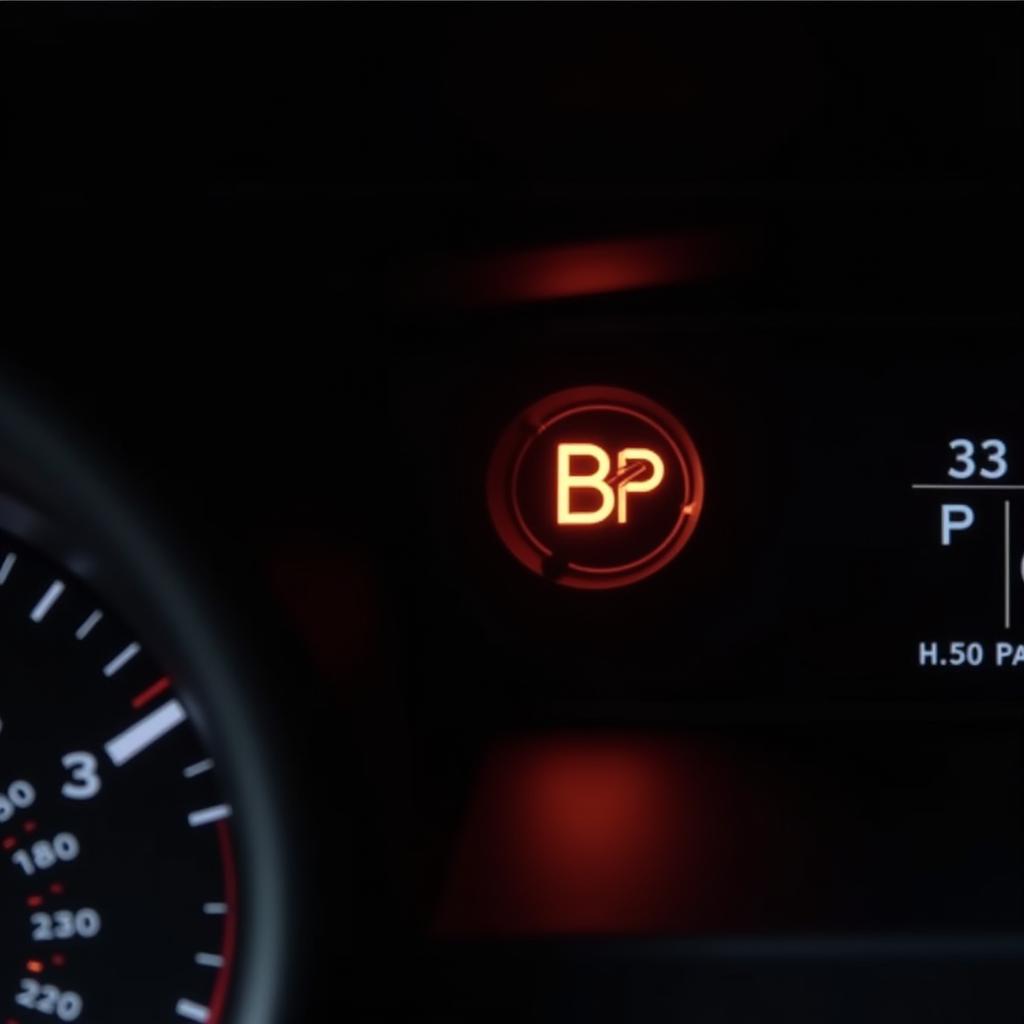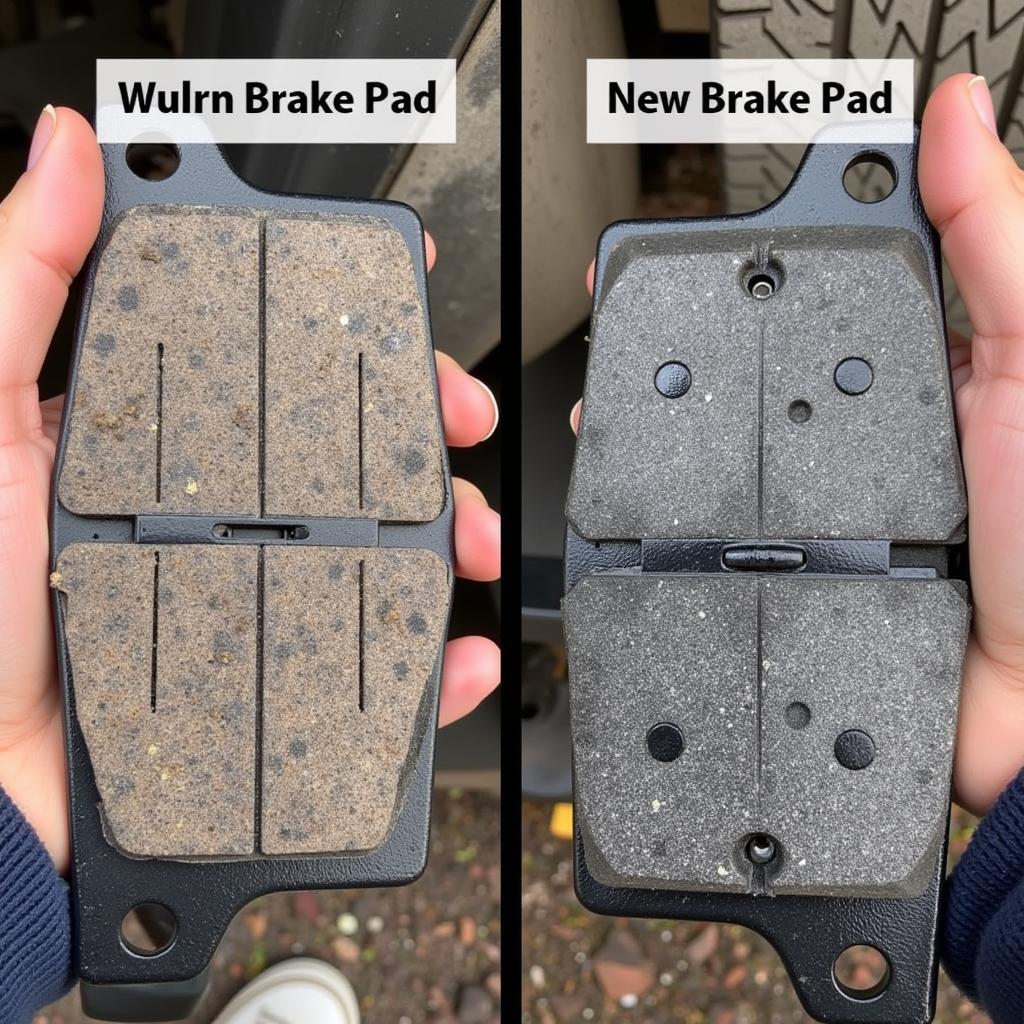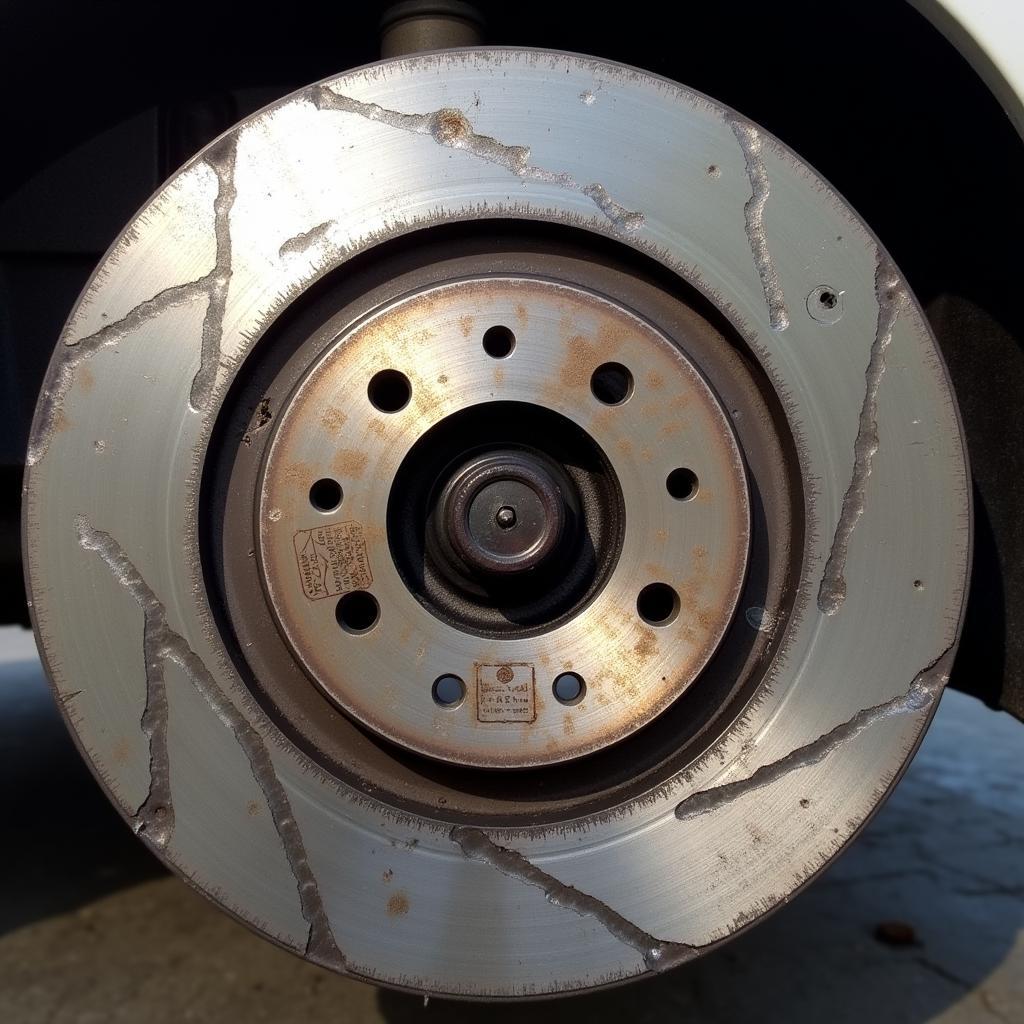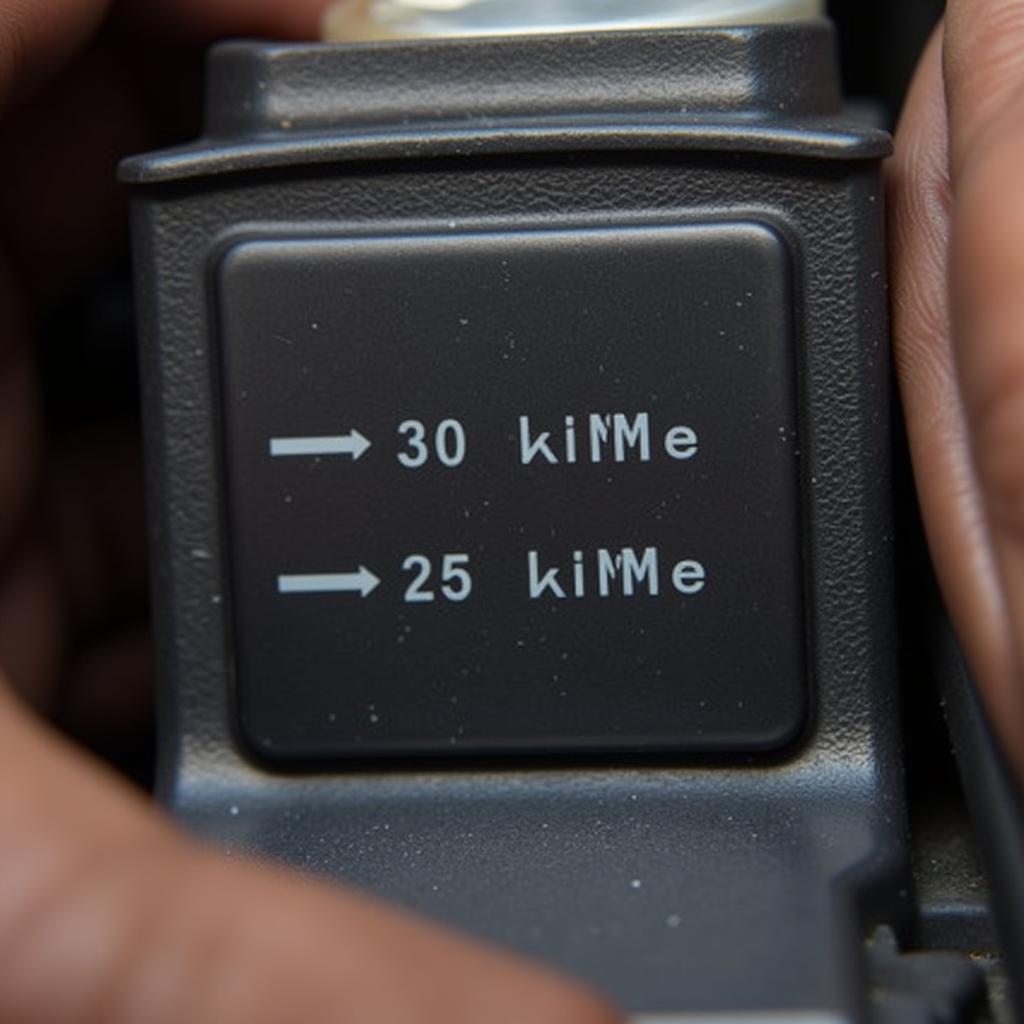If your Mercedes is displaying a brake pad warning light, you’re likely wondering, “Brake pad warning light how long do I have?” Understanding this warning and acting accordingly is crucial for your safety and the longevity of your vehicle. This article will delve into the specifics of the brake pad warning light in Mercedes vehicles, providing you with the knowledge you need to address this important issue.
The brake pad warning light in your Mercedes is a critical safety feature designed to alert you when your brake pads are nearing the end of their lifespan. Ignoring this warning can lead to costly repairs, compromised braking performance, and potentially dangerous driving situations. Let’s explore what this light means and what steps you should take. If you’re experiencing a brake warning light issue with your Passat B6, you can find helpful information at passat b6 brake pad warning light.
Understanding the Brake Pad Warning Light
The brake pad warning light, often a yellow or red symbol on your dashboard, typically illuminates when the brake pad sensors detect that the pad material has worn down to a predetermined minimum thickness. This thickness varies between models but generally indicates that you have a limited amount of safe braking left. Don’t confuse this with the brake fluid low warning light, which indicates a different problem. You can learn more about that at brake fluid low warning light.
How Long Can I Drive with the Brake Pad Warning Light On?
While there’s no definitive answer to “brake pad warning light how long do I have Mercedes,” it’s generally recommended to have your brakes inspected as soon as possible after the light comes on. Continuing to drive with worn brake pads can damage your rotors, calipers, and other brake components. The timeframe can range from a few hundred miles to a few weeks of driving, depending on your driving habits and the condition of your pads.
 Mercedes Brake Pad Warning Light
Mercedes Brake Pad Warning Light
What to Do When the Brake Pad Warning Light Illuminates
- Schedule an Inspection: The first step is to schedule an inspection with a qualified mechanic. They can assess the remaining pad life and determine if replacement is necessary.
- Avoid Hard Braking: While waiting for your inspection, avoid hard braking whenever possible. This will help preserve the remaining pad material.
- Listen for Unusual Noises: Pay attention to any grinding or squealing sounds coming from your brakes, as these can indicate severely worn pads.
- Don’t Delay Repairs: If your mechanic recommends brake pad replacement, don’t delay. Continuing to drive with worn pads will only exacerbate the problem and potentially lead to more expensive repairs. For issues with your Mercedes A Class brake pad warning light, check out this resource: brake pad warning light mercedes a class.
Factors Affecting Brake Pad Life
Several factors contribute to brake pad wear, including:
- Driving Style: Aggressive driving with frequent hard braking significantly reduces pad life.
- Driving Conditions: City driving with frequent stop-and-go traffic wears pads faster than highway driving.
- Brake Pad Quality: Higher-quality brake pads generally last longer.
- Vehicle Weight: Heavier vehicles put more stress on the braking system, leading to faster pad wear.
 Worn Brake Pads vs. New Brake Pads
Worn Brake Pads vs. New Brake Pads
“Regular maintenance is key to preventing brake issues. Don’t wait for the warning light to come on before addressing your brake system,” advises Hans Mueller, Master Automotive Technician at Mueller Motors.
Preventing Premature Brake Pad Wear
- Smooth Braking: Practice smooth braking techniques to minimize wear and tear.
- Coasting: Whenever possible, coast to a stop rather than braking heavily at the last minute.
- Regular Maintenance: Have your brakes inspected regularly as part of your vehicle’s routine maintenance schedule. You can find more information about Mercedes brake pad warning lights here: brake pad warning light on mercedes.
What Happens if I Ignore the Brake Pad Warning Light?
Ignoring the warning light can lead to metal-on-metal contact between the brake pad backing plate and the rotor, resulting in damage to the rotors, calipers, and other brake components. This can significantly increase repair costs and potentially compromise your braking ability, creating a dangerous driving situation. This article addresses a 2015 E-Class brake warning light problem: 2015 mercedes-benz e class brake warning light problem.
 Damaged Brake Rotor
Damaged Brake Rotor
“Ignoring a brake pad warning light is like ignoring a ticking time bomb,” warns Franziska Schmidt, Lead Mechanic at Schmidt Automotive. “It’s only a matter of time before it goes off, and the consequences can be severe.”
In conclusion, addressing the brake pad warning light promptly is crucial for maintaining the safety and performance of your Mercedes. While the question of “brake pad warning light how long do I have Mercedes?” doesn’t have a fixed answer, it’s always best to err on the side of caution and have your brakes inspected as soon as possible after the light illuminates. Don’t wait until you experience a drastic reduction in braking power to take action.

